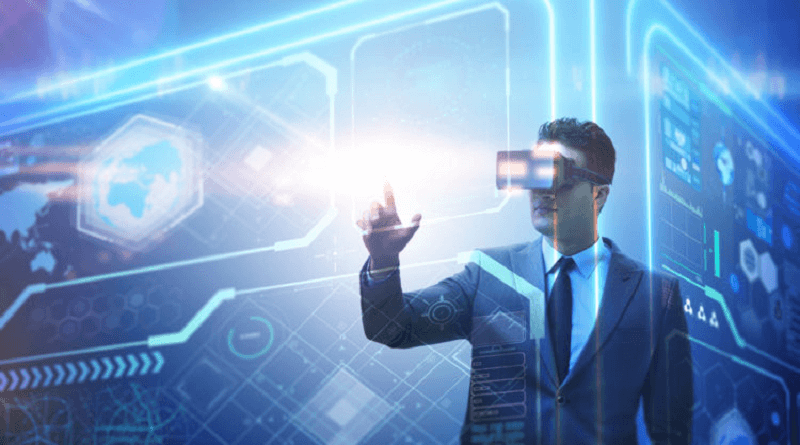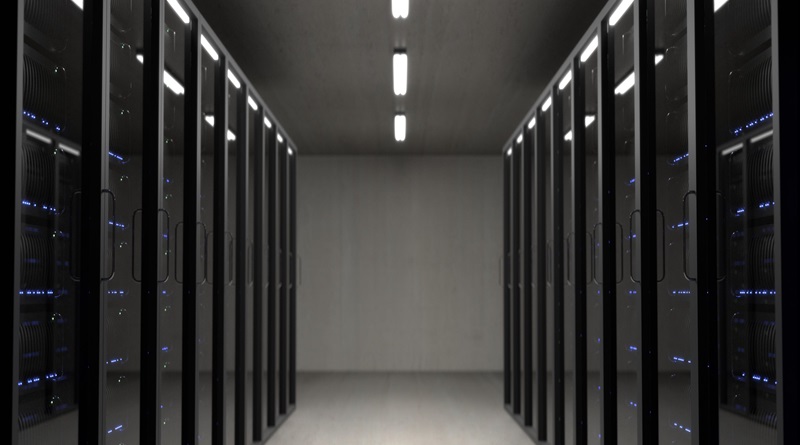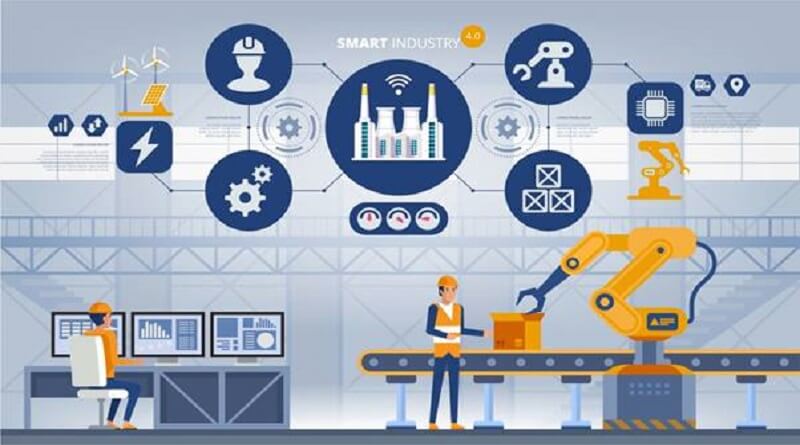5 Ways AR Will Play a Leading Role in The Age of The ‘New Normal’

The Covid-19 pandemic has had a significant impact across a range of industries. Over the past 18 months, many nations have been forced into entering lockdowns, limiting the ways that companies can do business and interrupting the way we work, learn and entertain ourselves in the process. The health crisis has been so severe that its impact is likely to reach well into a ‘new normal’ way of life as we emerge from the pandemic and build for the future.
The restrictions that have been placed upon individuals and organizations alike have led to an upsurge in the adoption of digital technologies to support a wide array of activities like online shopping, digital and contactless payments, remote work, online education, telehealth and entertainment. The ability to support such activities is largely reliant on the availability of digital-ready infrastructure and services.
Augmented reality, for both enterprise and personal purposes, can build upon such infrastructures by offering the ability to deliver digital content that’s layered over a real-world view to support business and entertainment purposes.
The development of this technology has come at a time where digital transformation has become essential in our emergence from the pandemic into the age of the ‘new normal’ where the recovery of businesses can be driven by innovation.
Facing the Challenges of the New Normal
Virtually overnight, business operations halted and supply chains were left ill-prepared for the disruptive force of Covid-19. Companies scrambled to implement work from home policies, ban employee travel and form fresh health and safety policies.
According to a recent CPID survey, 37% of employees expect the proportion of people working from home regularly (WFH) to increase, almost a quarter of employers expect the number of staff working from home to rise and around two-thirds of companies believe productivity has either remained the same or improved since the arrival of WFH measures
Furthermore, UK building society Nationwide has resorted to telling 13,500 members of its staff that they’re welcome to ‘work from anywhere.’
This is largely uncharted territory for businesses to explore, but organizations that look to empower their workforce to maintain their operating models and drive productivity are best suited to embrace the upcoming digital transformation of the next decade.
This means that businesses need to become smarter in regards to how they can optimize their constrained workforce with these policies. With Covid-19 limiting in-person collaboration, many employees have been left to solve mission-critical tasks on their own without sufficient guidance.
Smart marketers are also in for a digital shift as high streets continue to dwindle and the online world becomes an increasingly immersive advertising hub. Social media marketers are quickly using new strategy tools on the scene, and investing in new immersive AR powered advertisements to battle against other digital giants.
Likewise, for consumers, pupils and students alike, the age of the ‘new normal’ provides new challenges. Education, eCommerce and healthcare alike will all be impacted by the rise of digital transformation as we transition into a post-Covid world. Let’s take a deeper look at five key ways technologies like augmented reality will help to make the transition into the ‘new normal’ a more natural progression:
1. Marketing in the Post-High Street Era
Augmented reality is nothing new to marketers. AR in the word of marketing has been experimented with for many years, with fun gimmicks that can be shared on social media for greater audience engagement.
However, its usage within the industry is likely to be ramped up as the effects of Covid-19 are fully felt. High streets and shopping malls are struggling to find custom in a world that’s gotten used to eCommerce during lockdowns and marketers are searching for ways to resonate with customers in more virtual environments.
Younger consumers are already familiar with AR through the use of integrated filters on social media platforms like Snapchat, Instagram and TikTok, while Google is looking to integrate AR into mobile search with its popular 3D animals feature.
As AR becomes more prevalent, it will present more opportunities for marketers to transcend the face filters of social media and create engaging 3D rendered campaigns to drive impressions in a world without high street stores.
Technology like LiDAR and Simultaneous Localization and Mapping (SLAM) open up the possibilities for greater product visualization where consumers can virtually try on products before they buy them – exploring the features and functions of their prospective purchases before a transaction is made.
Typically, try-on technology has been leveraged solely through advertising campaigns, where businesses could guarantee engagements with the right audience conveying the targeted demographics. This approach has been successful considering brands like NYX Cosmetics have been able to generate over 60 million try-ons of their beauty products in one single day.
However, the next frontier will be delivering engagements that drive sales in a world with little direct interaction with brick and mortar stores. With physical try-on experiences dwindling, the new normal will be punctuated with virtual try before you buy functions.
1. Combatting Fatigue in a Remote World
The arrival of the pandemic has forced us into new behaviours like working from home and swapping meeting rooms for long hours spent on Zoom calls without any face to face interaction with our colleagues.
Meetings, webinars and workshops have all transitioned into a virtual space, and we’re tasked with becoming accustomed to staring at our screens and making the same pose or striking identical postures. Although this technology has helped businesses to make the leap from in-house to more remote collaboration, endless video conferencing may not be the permanent solution to WFH that we’re looking for.
According to the American Psychological Association (APA), instances of remote and isolated WFH practices can carry psychological effects like feelings of apathy, anxiety and even depression.
So, why is it that virtual meetings can seem more draining than meeting our colleagues in face-to-face environments? The answer may be down to the lack of social and nonverbal cues we’re used to understanding and processing. These unspoken forms of communication can make up to around 80% of human communication, according to Anna Bäckström, Principal of Consumer Science at Fourkind.
Augmented reality offers a strong opportunity to create immersive 3D environments on top of the real world, and by adding wearable technology that will soon have the power to be encapsulated within traditional glasses frames like those on display here, we can gain access to a simulated real life experience whilst working remotely.
Bäckström’s company, Fourkind, is part of Thoughtworks, a firm that has developed an extended reality incubation center that enables XR experiments to take place whilst working on an open-sourced framework called Arium to fast track extended reality application development.
Recently, Thoughtworks’ CMO sponsored the incubator to explore how XR and AR could help to improve collaboration within virtual environments. The result was ThoughtArena, an augmented reality mobile app that enables users to create a multimedia space with virtual boards in which they can collaborate – helping to improve engagement, enjoyment, creativity and productivity whilst working remotely.
The Wild is another example of a remote collaboration platform based in architecture and design to help individuals to experience their work together, from anywhere, in both AR and VR. The platform allows SketchUp or Revit models to be imported and experienced at scale, while spatial concepts can be communicated by reviewing interactive 3D renderings in real time.
With each participant rendered in a 3D avatar, individuals can communicate effectively in real-time or comments can be left in a dedicated virtual space for later review.
1. Augmented Education
Lockdowns have disrupted how children gain their education. Although schools are likely to remain open in the age of the new normal, with little danger of a remote work type event impacting the education sector, the learning experiences kids have adopted at home are likely to pave the way for more immersive approaches to education away from the pandemic.
Augmented reality can help parents and teachers alike to make learning more enjoyable and engaging by enabling the materials in textbooks to come to life. For instance, if a pupil is reading about the moon landings, they could point their smartphone camera at the book to see a 3D rendering of the event before their eyes.
This form of technology can also offer experiences to students who are studying remotely – and in some cases, thousands of miles away from their campus. If they’re studying a complex subject, AR will be capable of leveraging a deeper understanding of the subject matter that wouldn’t be as easy to achieve through books or traditional forms of media.
We’re already seeing evidence of AR and VR in classroom environments. One prominent example is Google Expeditions, a technology that allows users to see 3D objects in classrooms like volcanos, storms and even DNA. Through this app, it’s already possible to see over 100 expeditions that include the history of technology and significant historical events.
2. Lifestyle-Driven AR
We often see modern technologies integrating with legacy tech in the name of convenience, but AR and XR may be capable of going one step further in integrating with the human body. This can be done through the use of AR contact lenses or future generations of augmented wearables.
Although the notion of contact lenses creating augmented reality overlays on to our field of vision without the use of any other external devices may seem far fetched, Californian startup, Mojo Vision has already revealed that it’s working on AR contact lenses with built in micro-LED displays that place information inside the eyes of the wearer.
Mojo Vision has already claimed that its first priority is to develop products that can help people struggling with poor vision, but the potential use cases of augmented contact lenses are innumerable. Mojo eventually intends for their product to be made available to consumers who could use their AR lenses to project things like health tracking stats and other useful data. When the prototypes were demonstrated to journalists, the displays were pre-loaded with information like text messages and weather reports.
Immediately, this technology has the potential to retire the mobile phone as we know it. AR technology delivered straight into our line of sight means that there’s no need to physically hold a device to reply to that WhatsApp group: you could do it with the blink of an eye. Thinking about buying a 50-inch TV for your living room? Your contact lenses could project a movie the size of a cinematic screen straight on to your eyes.
3. Delivering Augmented Healthcare
The necessity for social distancing in response to Covid-19 has been seen as one of the biggest drivers for digital transformation. Even in terms of medicine, in hospitals, medical schools and the local doctor’s surgery, augmented reality will start to show its many benefits to patients and doctors alike – whether participants are in-house or remote.
From assisting with finding veins to draw out blood (as can be seen in the development of AccuVein) or improving the accuracy of diagnoses, the potential for AR in healthcare is huge.
Augmented reality could not only assist doctors, but it could also assist in case of an emergency in providing information about life-saving treatments.
AR can also be used to help medical professionals by providing efficient and interactive forms of training that can help to streamline the learning process attached to operating new equipment and learning procedures. This can be vital when experienced staff and tutors are unable to provide training themselves.
Harry Hulme, marketing and communications manager at RE’FLEKT, a company that provides augmented training solutions for healthcare and other industries, said that “we’re seeing that AR is a key tool for healthcare workers during these testing times.”
“For medical training and equipment changeovers, AR solutions substantially reduce the risk of human error while significantly reducing training and onboarding times. Moreover, the time-critical process of equipment changeover is accelerated with AR-enhanced methods.”
With the global rollout of vaccinations, we’re just beginning to embark on the age of the new normal. While it’s difficult to predict how exactly the world will emerge from such a deep and catastrophic pandemic, it’s fair to say that emerging technologies like augmented reality will take a leading role in driving the recovery at enterprise level.



![How To Solve The [pii_email_bd49696e1d43ab5b60ba] Error Code?](https://www.itechtalky.com/wp-content/uploads/2021/11/pii_email_bd49696e1d43ab5b60ba.png)

